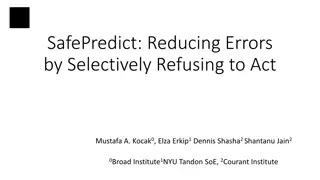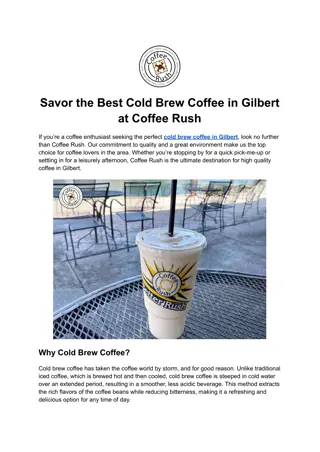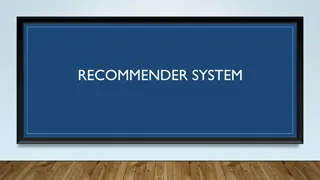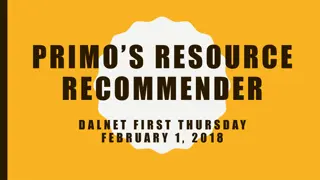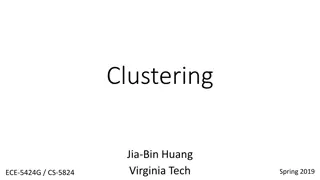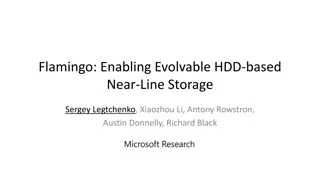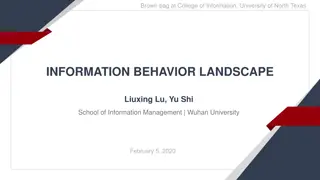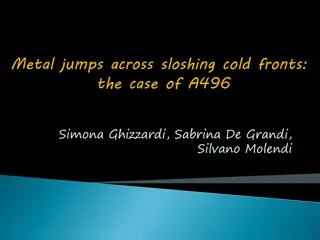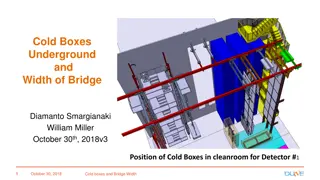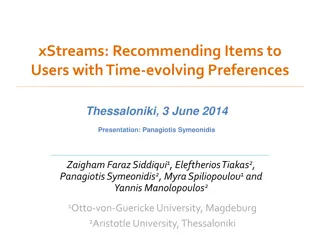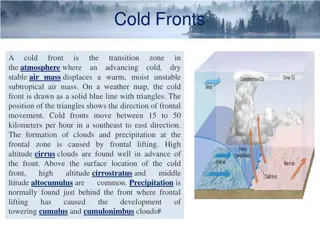The Cold Start Problem in Recommender Systems
Targeting new users or items with limited or no information, the cold start problem poses challenges due to a lack of data. Strategies like knowledge-based, content-based, and collaborative filtering are discussed along with methods like neighbor clustering and hybrid approaches. Techniques such as content-based matching, joint features regression, and deep learning are explored to address this issue effectively.
Download Presentation

Please find below an Image/Link to download the presentation.
The content on the website is provided AS IS for your information and personal use only. It may not be sold, licensed, or shared on other websites without obtaining consent from the author.If you encounter any issues during the download, it is possible that the publisher has removed the file from their server.
You are allowed to download the files provided on this website for personal or commercial use, subject to the condition that they are used lawfully. All files are the property of their respective owners.
The content on the website is provided AS IS for your information and personal use only. It may not be sold, licensed, or shared on other websites without obtaining consent from the author.
E N D
Presentation Transcript
Issue Cold Start Problem in Recommender System Wenkai Mo
Cold Start Problem Targeting new users or items which only have a little or none useful information in the system. Difficulty: Few amount of data. Knowledge-based Fast Profiling Content-based Neighbor method Introduce Other Sources Content-based Neighbor Method Collaborating Filtering With a little information. Content-based Neighbor Method Without any information. Only have some in profiles. With huge information.
Content-based Content-based Recommender or Hybrid Recommender Recommendations are based on the information on the content of items rather than on other users opinions. (For users, content refers to profiles.) Old Item/user New Item/user sim1 SIM Neighbor Method Can also use SNS as neighbor sim2 sim3 Similarity Function Content Content Old User New Item sim1 Matching Threshold sim2 sim3 Machine Learning Feature Content
Neighbor by Clustering Old Items Clusters 2 New User ? Old Items Clusters 1 Old Items Clusters 3 ? Old Users Clusters 3 Old Users Clusters 1 ? ? ? Old Users Clusters 2 ? New Item
Content-based Matching Joint Features Regression for Cold-Start Recommendation on VideoLectures.Net A Hybrid Approach for Cold-start Recommendations of Videolectures Lightweight Approach to the Cold Start Problem in the Video Lecture Recommendation Old User New Item sim1 Matching Threshold sim2 sim3 Machine Learning Feature Content SVM, L2R, etc.
Content-based (For Items) Collaborative Topic Regression Wang C, Blei D M. Collaborative topic modeling for recommending scientific articles[C]//Proceedings of the 17th ACM SIGKDD international conference on Knowledge discovery and data mining. ACM, 2011: 448-456.
Content-based (For Items) Deep Learning Consider Noise Wang H, Wang N, Yeung D Y. Collaborative deep learning for recommender systems[C]//Proceedings of the 21th ACM SIGKDD International Conference on Knowledge Discovery and Data Mining. ACM, 2015: 1235-1244.
Content-based (For Items) Content + CF -> Hybrid -> Cold Start Saveski M, Mantrach A. Item cold-start recommendations: learning local collective embeddings[C]//Proceedings of the 8th ACM Conference on Recommender Systems. ACM, 2014: 89-96.
Borrow Data from Other Platforms Lin J, Sugiyama K, Kan M Y, et al. Addressing cold-start in app recommendation: latent user models constructed from twitter followers[C]//Proceedings of the 36th international ACM SIGIR conference on Research and development in information retrieval. ACM, 2013: 283-292.
Exploration Selecting users with distinct tastes until obtaining the first feedback. Once a user provides feedback, ExcUseMe selects users that are similar to this user and are thus more likely to provide feedback on the new item. Aharon M, Anava O, Avigdor-Elgrabli N, et al. ExcUseMe: Asking Users to Help in Item Cold-Start Recommendations[C]//Proceedings of the 9th ACM Conference on Recommender Systems. ACM, 2015: 83-90.
Fast Profiling How to select proper seeds for a new user? Diversity Seed, when a user s rating for it is known, can reveal the best the user s identity. The same with new items.
Fast Profiling Rashid A M, Karypis G, Riedl J. Learning preferences of new users in recommender systems: an information theoretic approach[J]. ACM SIGKDD Explorations Newsletter, 2008, 10(2): 90- 100.
Fast Profiling for Users Select items from these aspects Random Popularity Pure entropy: Informally, a movie that has some people who hate it and others who like it should tell us more than a movie where almost everyone liked it. Balanced strategies: Popularity*Entropy, Log Popularity*Entropy Personalized: Item-Item personalized Rashid A M, Albert I, Cosley D, et al. Getting to know you: learning new user preferences in recommender systems[C]//Proceedings of the 7th international conference on Intelligent user interfaces. ACM, 2002: 127-134.
Fast Profiling How to select proper seeds for a new user? (1) Diversity (2) Seed, when a user s rating for it is known, can reveal the best the user s identity. How to select? (My Thought) Heuristics Sampling (For (2)) Genetic Algorithm (For Optimizing(1))
Exploration (Fast Profiling) Obtain ratings from the k representative users for a new item in order to recommend it to other users. Similarly, we only need to ask a new user to rate k representative items to recommend other items to him. Liu N N, Meng X, Liu C, et al. Wisdom of the better few: cold start recommendation via representative based rating elicitation[C] //Proceedings of the fifth ACM conference on Recommender systems. ACM, 2011: 37-44. K: The Most Representative Terms
Cold Start Problem Targeting new users or items which only have a little or none useful information in the system. Difficulty: Few amount of data. Knowledge-based Fast Profiling Content-based Neighbor method Introduce Other Sources Content-based Neighbor Method Collaborating Filtering With a little information. Content-based Neighbor Method Without any information. Only have some in profiles. With huge information.
Bootstrap Golbandi N, Koren Y, Lempel R. Adaptive bootstrapping of recommender systems using decision trees[C]//Proceedings of the fourth ACM international conference on Web search and data mining. ACM, 2011: 595-604. Each tree node represents a group of users. Each node of the tree predicts item ratings by taking the mean rating by its corresponding users. Splitting Criteria: item that partitions the users into three sets such that the total squared prediction error is minimized.
Matrix Factorization Barjasteh I, Forsati R, Masrour F, et al. Cold-Start Item and User Recommendation with Decoupled Completion and Transduction //Proceedings of the 9th ACM Conference on Recommender Systems. ACM, 2015: 91-98.0 Assume that there is a sub-matrix M, which includes enough rating data to be fully recovered via standard methods such as matrix factorization or matrix completion. Noise



